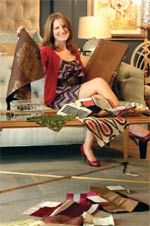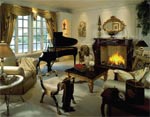In design, lighting can make or break a project. Knowing the basics can save you from lighting disasters and pitfalls. With these fun and simple ideas your favorite room will go from so-so to extravagant!
Task lighting-
Recessed can lights or track lighting provide direct light to work surfaces and light the room with a soft emphasis on the perimeter. Most of the time these light bulbs need to be fluorescent to meet certain lighting requirements. Using warm white fluorescent light bulbs will cut down on the harsh and unpleasant light that this type of bulb tends to give off. These light bulbs are dimmable and can set the mood for different uses. When considering redoing lighting in a room, always consult a designer that is familiar with lighting design. Floor and table lamps also provide adequate lighting for working, reading, or playing games.
Spot lighting-
Directional cans are used to illuminate artwork and draw attention to an important architectural detail. The can should be centered on the piece of art or between two pieces to properly light the desired area. Another form of spot lighting is up lighting, which is movable and can be used on the floor to call attention to a tree or sculpture and bring nice light to a somewhat dark corner.

Ambient lighting-
Natural light from windows and skylights offer a great source of light during the day. This light washes the room with no real direction. Harness this light with top-down-bottom-up shades that let light into the room from the top or bottom of the window when it is needed. Without natural lighting a room needs one main light that can illuminate the room enough for everyday tasks. This light can be on a dimmer switch to control the amount of light it gives off and set the mood for different occasions. A chandelier is a great way to bring sophistication and elegance into a space while lighting it enough for dining or entertaining.




